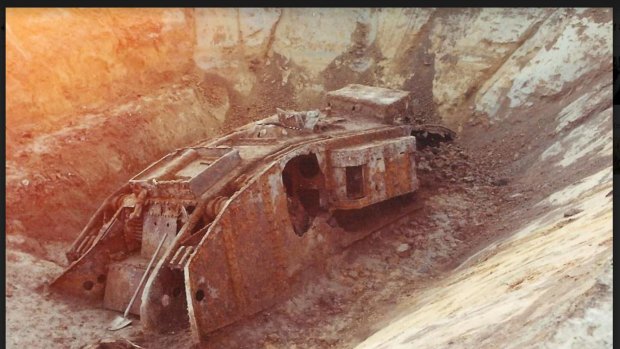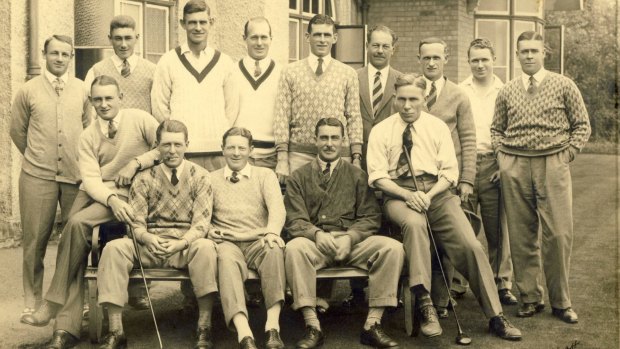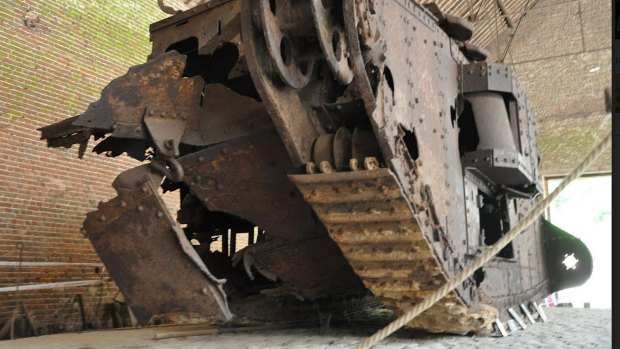By Tim Barlass
Start digging up history and you never quite know what you might unearth.
Not infrequently wartime aircraft have been discovered, often with the remains of airmen still strapped inside. But only one First World War tank has been exhumed from the battlefields of northern France.

Deborah - the only tank exhumed from WWI battlefields
With the Battle of the Somme at a stalemate, more than 340 tanks were positioned against the German forces at Cambrai in November 1917. It was an attempt to smash through enemy lines. Some 35 tanks were in D Company under the command of a Sydneysider, of which 10 were "knocked out" including one in which five of the eight crew died.
After the war, the villagers moved back into their homes and the army team in charge of clearing up decided to bury the hulk of the tank nicknamed Deborah, rather than blowing it up, as was usual. It was placed in a crater and covered with soil. There it remained, until an old woman in the village told historian Philippe Gorczynski that she had seen it happen as a child.

Lieutenant-Colonel William Kyngdon (back row in jacket) with the Australian cricket team (Donald Bradman back left).
Intrigued, Gorczynski tried to find it. Years of research examining old trench maps and aerial photos paid off, and in 1998 Deborah was excavated. Then the detective work really started.
Researchers found the graves of five men in a Commonwealth cemetery and established some were from Deborah. What started with a search for five families snowballed. The researchers are now in touch with the families of around 100 tank pioneers spread all over the world, including Australia and New Zealand.
Among the stories was that of Lieutenant-Colonel William Frederick Robert Kyngdon, whose ancestors settled in St Leonards, north of Sydney. He served in a variety of postings, mostly in Africa. One report carried in The Sydney Morning Herald under the headline 'Australians at the Front', stated: "News has been received that Captain Kyngdon, only son of Dr J F Kyngdon, has been wounded whilst serving in West Africa. He was in command of a battery of native artillery on service in the Cameroons and Tonga Land."
In May 1916 Kyngdon was in England, a country he barely knew and where the British Army was ready to deploy their top-secret weapon, the tank. Kyngdon was promoted to major and was among those to use the new machines. A year later he was in France as Lieutenant-Colonel in command of D Battalion.

The tank called Deborah.
Vincent McGarry, one of the research team, said: "Lieutenant-Colonel Kyngdon was born in Darlinghurst. Another of his relatives served in the tanks in WWII, also as a lieutenant-colonel in the Australian army. The tank project is coming to fruition in a variety of ways, a book Deborah and the War of the Tanks is about to be published and a museum to house the tank will be opened in France."
When the war ended Kyngdon left the army and his trail went a bit cold.
Fast forward to 1928 and Kyngdon turned up in the West Country. He was secretary of the Burnham-on-Sea Golf Club in Somerset. One of the leading lights there was the English playwright Ben Travers who had had travelled to Australia with the England cricket team for the tour in 1928-29, and met Australian star Donald Bradman. The following year, the return invitation to play golf in Somerset went to Bradman's team, where Kyngdon and Bradman were photographed together.
Kyngdon and his wife later moved to Scotland, where they died in the 1960s. They had no children, but the research team unearthed distant relatives in Australia and New Zealand. One of them, Andrew Kyngdon, works as chief psychometrician at the NSW office of Board of Studies, an education analyst.
He said: "The family didn't really know of their ancestor because he had gone to England when so young. We are very pleased to hear of another relative who had served – military service ran deep in the family. I had no idea we had another lieutenant-colonel who had served in tanks. It's all so exhilarating to learn of what he did."
Families of about 25 men who served in D Battalion will meet at the Honourable Artillery Company in London on Monday for the launch of the book and to mark the first tank attack at the Battle of the Somme on September 15, 1916.